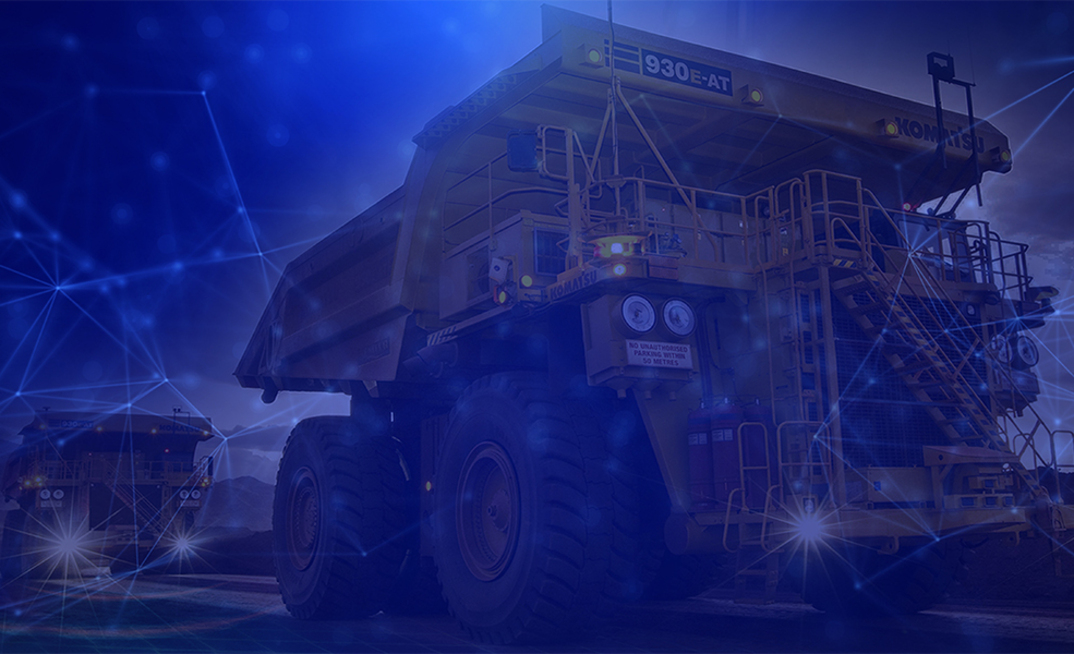Industry 4.0 is largely about the ability of companies to harness and use information from connected assets to make decisions.[1] The advent of cellular 5G will be crucial to the full realization of Industry 4.0 in mining. It will enable mining companies to collect information at significantly higher resolution and granularity than is possible with the types of networks currently in use at mines.
When Wi-Fi was introduced in the late 1990s, little thought was given to the future challenges of IoT-enabled industrial sites. The main problem with Wi-Fi is that it is a constrained resource where users fight for access, causing bottlenecks. Where an autonomous system operates over Wi-Fi, collecting data from machines at too short an interval can interfere with other essential queries like remote activation of an E-Stop button or background update to an onboard GPS system.
Cellular 5G could begin to become available to mine sites in around three to five years. For now, other types of new-generation networks are filling the gap. One is LTE (also known as 4.9G), a pre-5G standard that incorporates several technologies associated with 5G. Another is fixed wireless 5G, which provides extremely high capacity - but only to devices located in close proximity to the wireless access point. Fixed 5G enables mine operators to collect massive amounts of data at fixed locations where trucks gather, such as a crusher or fuel island, while maintaining the status quo on the haul road.
When Cellular 5G arrives, it will alleviate the bottleneck between truck and tower, giving mine operators the ability to collect data at shorter intervals than is feasible using today's resource-constrained networks. There will likely be actionable insights within all that data that were previously concealed from view because sampling intervals were too long. For example, an operator might choose to collect the turbo temperature of trucks 10 times per second instead of once per second. This would show up any minuscule fluctuations in temperature - an indicator of possible component failure.
Komatsu is currently researching how our autonomous systems can take advantage of 5G and other game-changing network standards such as Wi-Fi 6 (802.11ax). Additionally, we are investigating how we can alter an application's behavior to best utilize whatever network medium is available to our trucks at any given time.
Giving trucks the ability to detect network quality will empower operators to make smart choices. Returning to our earlier example, an operator may instruct a machine to record turbo temperature 10 times per second where the connection is good, such as near a fixed 5G access point. On the long road to the crusher where the connection is poorer, the machine may only record temperature once per second and save all of it to the onboard system. Then, when the truck gets to a location with more bandwidth, it can transfer all that data to the company's internal database.
The greater amounts of bandwidth afforded by newer types of network infrastructure are also proving to be a game changer for Komatsu's relationship with operators. In the past, we had to physically go to the customer's location, collect data on a hard drive and bring it back to head office to analyze. With digital transformation, we can get data from the trucks to our servers instantaneously. This gives us real-time insights into how customers use our applications, enabling us to react and improve our products more quickly.
[1] Adapted from Deloitte's definition here: https://www2.deloitte.com/us/en/insights/focus/industry-4-0/challenges-on-path-to-digital-transformation/summary.html
ABOUT THIS COMPANY
Komatsu
HEAD OFFICE:
- 4400 W. National Ave, Milwaukee, Winconsin 53214-3684, USA
- Phone: (414) 671-4400
- Web: mining.komatsu

























